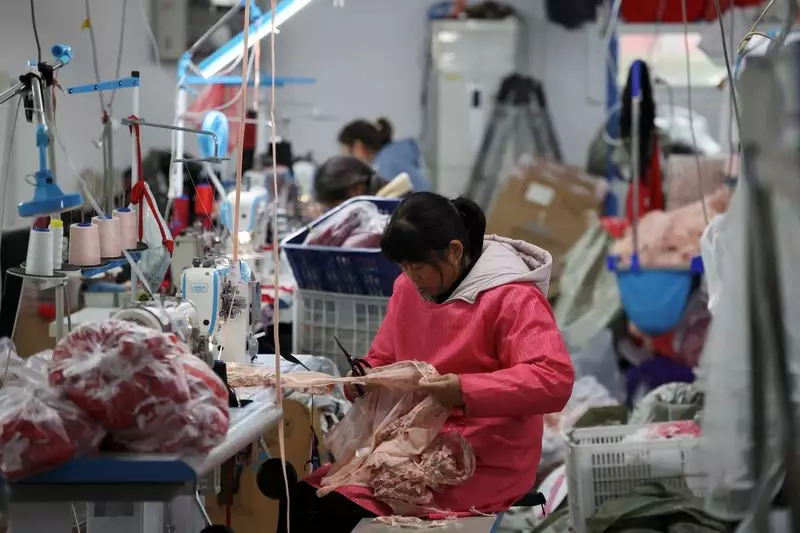In a disheartening trend, China’s industrial sector has experienced a continuous downturn in profitability, marking a significant concern for economic planners and policymakers alike. Reports indicate that for the third consecutive year, profits among industrial firms have plummeted, with official statistics revealing an overall decline of 3.3% in 2024. This follows a precarious drop earlier in the year, where profits declined by 4.7% from January through November, illustrating an alarming stagnation in growth and a potential harbinger of broader economic struggles.
Several issues converge to precipitate this decline. The Chinese economy, while narrowly achieving a 5% growth rate in GDP, is grappling with deep-rooted challenges such as a wavering property market and tepid domestic consumption. These factors have led to an pervasive erosion of business confidence. On a broader scale, the year witnessed factory-gate prices continuing their downward trajectory, which has severely impacted corporations’ bottom lines and, by extension, the disposable incomes of the workforce.
The National Bureau of Statistics (NBS) has cited imbalanced growth patterns, where industrial outputs outperformed retail sales substantially. This suggests that while factories ramped up production, the resulting goods weren’t meeting consumer demand, further complicating the economic landscape. Moreover, an increasing unemployment rate adds another layer of strain, showcasing a labor market that is becoming increasingly fragile.
Adding complexity to this situation is the shifting landscape of international trade, particularly influenced by the newly instated Trump administration in the United States. In response to threats of potential tariffs, particularly a proposed 10% duty on Chinese imports, many manufacturers hurriedly moved to bolster exports. Though there was a reported uptick in exports during December, this was largely driven by companies scrambling to mitigate risks associated with the impending trade environment. This frantic push for foreign sales reflects a type of economic foreboding as businesses brace themselves for possible repercussions from new tariffs.
Interestingly, the NBS data indicate varying fortunes across different categories of firms. State-owned enterprises saw an alarming 4.6% dip in profits, while foreign enterprises experienced a smaller decline of 1.7%. In contrast, private-sector businesses managed to demonstrate resilience, recording a modest 0.5% increase in earnings. These figures highlight a complex narrative where the survival and profitability of firms depend heavily on their ownership structures, revealing a nuanced dynamic within China’s industrial landscape.
To counteract the ongoing downturn in industrial profits and support economic stability, Chinese policymakers must not only expedite existing stimulus measures but also consider more innovative strategies to boost consumer confidence and spending. As the global economic landscape continues to shift, especially with evolving trade dynamics, a comprehensive approach that incorporates both domestic and international factors will be crucial for revitalizing an economy that is at a critical juncture. Without decisive action and an adaptive response to these challenges, the industrial sector’s struggle could have ripple effects that extend far beyond its borders, impacting global markets and supply chains in unforeseen ways.

